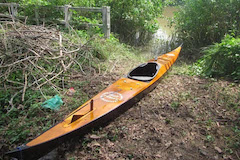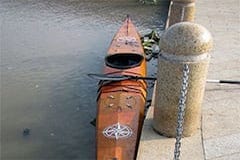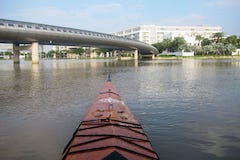 inalized my new kayak design, a considerable amount of work on optimizing the hull shape, adjusting it back and forth to find out the minimum drag numbers (based on the Kaper algorithm) while keeping stabilities and other parameters under control. Some numbers: LOA / LWL (length overall / waterline): 5.500 / 4.945 m, BOA / BWL (beam overall / waterline): 0.452 / 0.420 m. I reduced the boat width to exactly my hip plus 4 fingers (that is: 36 + 9 cm, my fingers are quite big, 9 cm for 4 fingers).
inalized my new kayak design, a considerable amount of work on optimizing the hull shape, adjusting it back and forth to find out the minimum drag numbers (based on the Kaper algorithm) while keeping stabilities and other parameters under control. Some numbers: LOA / LWL (length overall / waterline): 5.500 / 4.945 m, BOA / BWL (beam overall / waterline): 0.452 / 0.420 m. I reduced the boat width to exactly my hip plus 4 fingers (that is: 36 + 9 cm, my fingers are quite big, 9 cm for 4 fingers).
Designed draft: 0.11 m, Designed displacement: 95 kg, Cp (prismatic coefficient): 0.5475, Cb (block coefficient): 0.4064, LCB (longitudinal center of buoyancy): 0.5225, VCB (vertical center of buoyancy): 0.0690 m, LCF (longitudinal center of floatation): 0.5136, Cw (waterplane coefficient): 0.6445, S (wetted surface area): 1.699 m2, Aw (waterplane area): 1.329 m2, Am (midship section area): 0.034 m2, Cm (midship coefficient): 0.7466, KMt (vertical transverse metacenter): 0.196 m.
Predicted drags at 0.11 m draft (95 kg of displacement): 3 knot ~ 7.122 N, 4 knot ~ 12.622 N, 5 knot ~ 23.763 N. Predicted drags at 0.121 m draft (110 kg of displacement): 3 knot ~ 7.679 N, 4 knot ~ 13.611 N, 5 knot ~ 25.506 N. The hull is heavily optimized for speed in the [4 ~ 5] knot range with some sacrifices in stability and load capacity. Now that all “theoretical calculations” has completed, it would take a few months to build the physical boat to tell the real truths about the design! 😀
Serene – 1 p1
Serene – 1 p2
Serene – 1 p3
Serene – 1 p4
While 45 cm could be considered “extreme” for nowadays kayak (few available on the market has width at or below that value), it’s not really so with the traditional Greenland ones, some could be as narrow as 39 cm. Well for sure, it requires lots of skills to handle such a narrow boat.
The very important point here is the CG (Center of Gravity) used in calculating stability. The Sea Kayaker magazine uses a standard 25.4 cm as CG, as a reference point to compare different kayaks. I used the midpoint of VCB and KMt as CG, which is usually [12 ~ 14] cm for my cases.

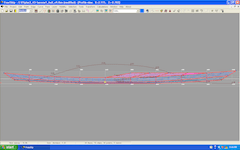
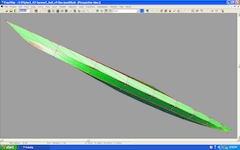
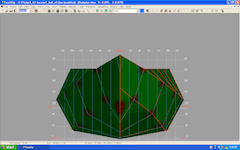
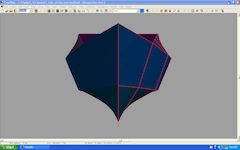
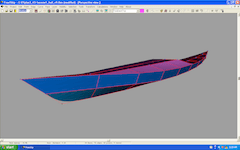
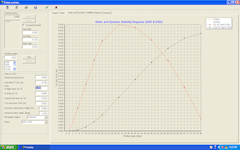
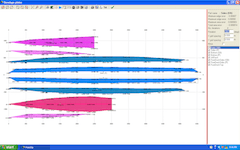
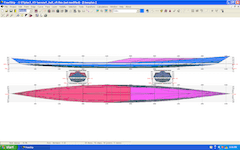
 ade some good progress in the process of modeling my new kayak… For a human – powered watercraft, water doesn’t like complex curves and shapes I think, so they need to be as simple as possible (it is not too simple to come to that simplicity though). The model is then decomposed by Free!Ship into several “developable” plates, at this point, professional builders could just output the plates to a large CNC machine, which would precisely cut the plywood accordingly.
ade some good progress in the process of modeling my new kayak… For a human – powered watercraft, water doesn’t like complex curves and shapes I think, so they need to be as simple as possible (it is not too simple to come to that simplicity though). The model is then decomposed by Free!Ship into several “developable” plates, at this point, professional builders could just output the plates to a large CNC machine, which would precisely cut the plywood accordingly.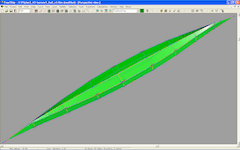
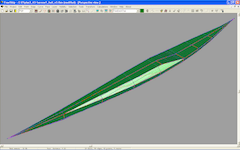
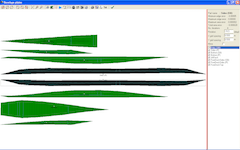
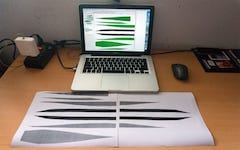
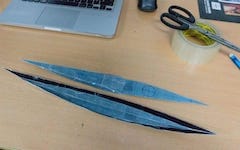
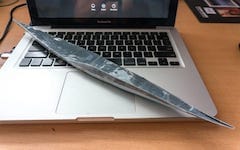
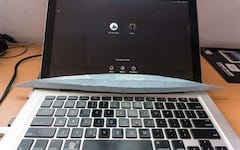
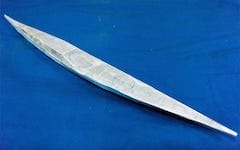
 t tooks just a few hours to learn the new software and construct the basic 3D objects: hull & deck. The time – consuming tasks are adjusting the shapes and playing around with hydrostatics. Some basic measures: LOA / LWL (length overall / waterline): 5.50 / 4.44 m, BOA / BWL (beam overall / waterline): 0.483 / 0.451 m, Draft: 0.1 m, S (wetted surface area): 1.66 m2, Cp (prismatic coefficient): 0.5619, LCB (longitudinal center of buoyancy): 0.5150, LCF (longitudinal center of floatation): 0.5192.
t tooks just a few hours to learn the new software and construct the basic 3D objects: hull & deck. The time – consuming tasks are adjusting the shapes and playing around with hydrostatics. Some basic measures: LOA / LWL (length overall / waterline): 5.50 / 4.44 m, BOA / BWL (beam overall / waterline): 0.483 / 0.451 m, Draft: 0.1 m, S (wetted surface area): 1.66 m2, Cp (prismatic coefficient): 0.5619, LCB (longitudinal center of buoyancy): 0.5150, LCF (longitudinal center of floatation): 0.5192.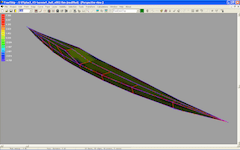
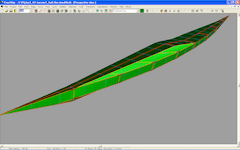
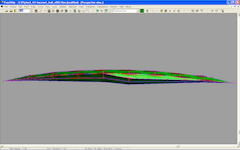
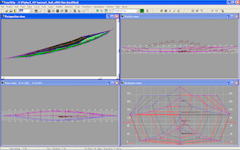
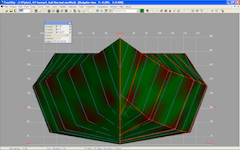
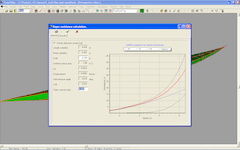
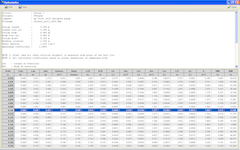
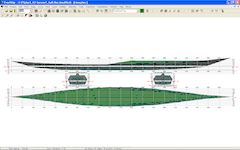
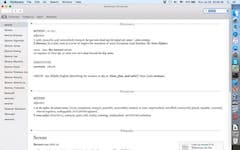
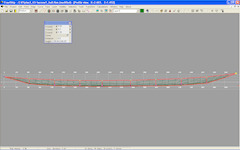
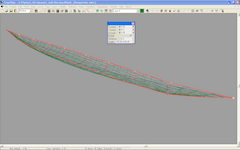
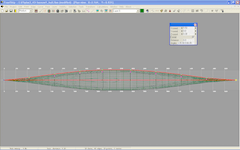
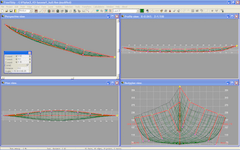
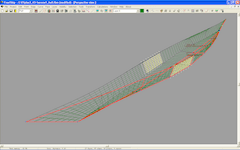
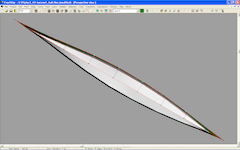
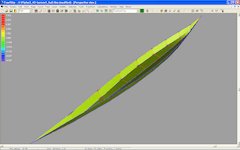
 onna end the series on my Hello World – 3 kayak building & fitting here with some comments on the design. It is an excellent boat in almost every aspects. The outlook is beautiful and attractive, extremely good stabilities (both primary and secondary), good tracking capability, and turning is easy with some slight edging. The hull shape is good for surfing too, it goes into turbulences, water or wind, with great confidence. And it is roomy, having lots of space for gear storage on longer trips.
onna end the series on my Hello World – 3 kayak building & fitting here with some comments on the design. It is an excellent boat in almost every aspects. The outlook is beautiful and attractive, extremely good stabilities (both primary and secondary), good tracking capability, and turning is easy with some slight edging. The hull shape is good for surfing too, it goes into turbulences, water or wind, with great confidence. And it is roomy, having lots of space for gear storage on longer trips.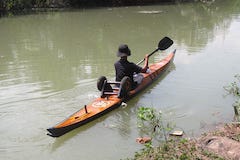
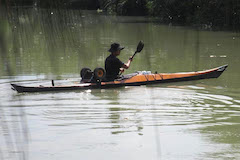
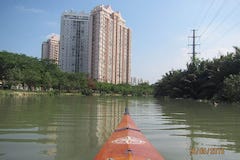
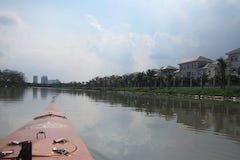
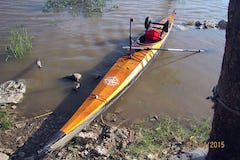
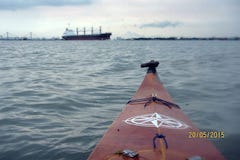
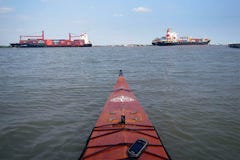
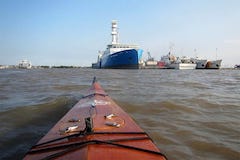
 he other day, I was conducting some re – entry tests: supposed that you’re thrown out of the boat by waves, and you need to climb in again, pump the water out to continue paddling before another wave hits you. But the hatches leak so much that re – entry is very difficult, the harder the next tries, as the kayak continues to take water in, it becomes heavy and unstable. This is very dangerous, imagine if this happens on open sea, and I would never want to be in an… “Abandon ship” situation.
he other day, I was conducting some re – entry tests: supposed that you’re thrown out of the boat by waves, and you need to climb in again, pump the water out to continue paddling before another wave hits you. But the hatches leak so much that re – entry is very difficult, the harder the next tries, as the kayak continues to take water in, it becomes heavy and unstable. This is very dangerous, imagine if this happens on open sea, and I would never want to be in an… “Abandon ship” situation.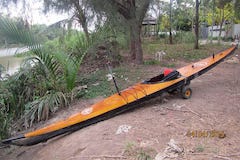
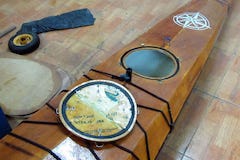
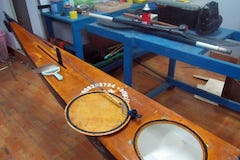
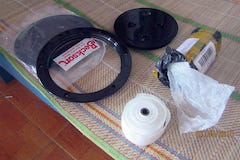
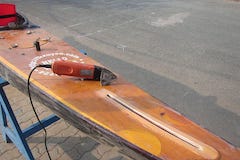
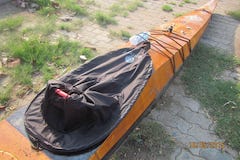
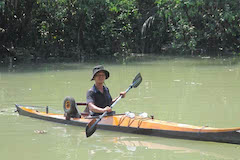
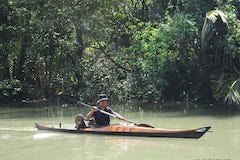
 pdates after updates, Hello World – 3 has become quite heavy indeed, now around 30 kg, too heavy to be handled on my back for long distance. Weight has been one of my weakest point in boat building, I’ve always had fears that the boat will not be strong enough, so put more and more materials in, that results into a much heavier boat than originally speculated 😢. This is the most important thing to be improved in my next build (projected to be toward the third quarter of this year).
pdates after updates, Hello World – 3 has become quite heavy indeed, now around 30 kg, too heavy to be handled on my back for long distance. Weight has been one of my weakest point in boat building, I’ve always had fears that the boat will not be strong enough, so put more and more materials in, that results into a much heavier boat than originally speculated 😢. This is the most important thing to be improved in my next build (projected to be toward the third quarter of this year).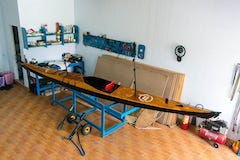
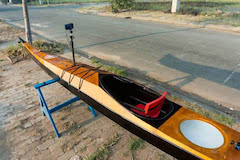
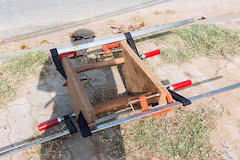
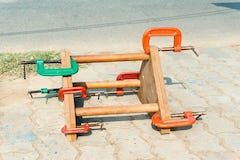
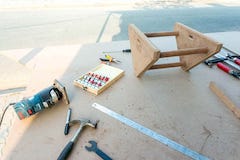
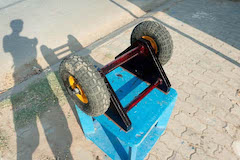
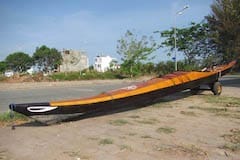

 ast batch of updates for my kayak before Tết (Lunar new year), a detachable and retractable light (and camera) pole. At a bicycle accessories shop, I found a small signal light which uses solar cell (about 3 square inches in area). Testing the LED torch showed that after being fully charged, it could continuously blink for two nights, more than enough to be used for the boat. It has 4 blinking modes, which could be changed by a switch located behind.
ast batch of updates for my kayak before Tết (Lunar new year), a detachable and retractable light (and camera) pole. At a bicycle accessories shop, I found a small signal light which uses solar cell (about 3 square inches in area). Testing the LED torch showed that after being fully charged, it could continuously blink for two nights, more than enough to be used for the boat. It has 4 blinking modes, which could be changed by a switch located behind.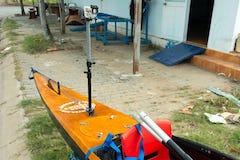
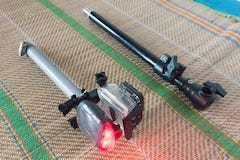
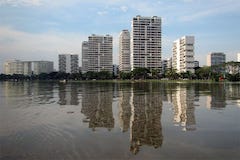
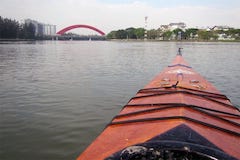
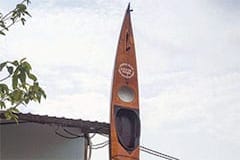
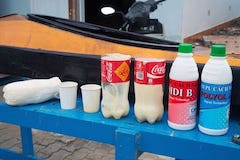
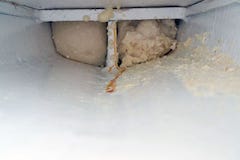
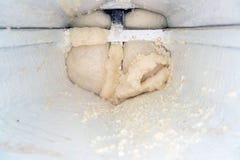
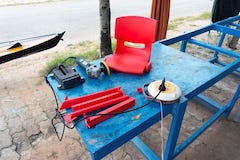
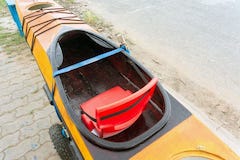
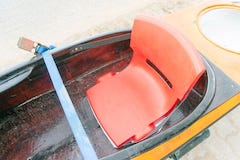
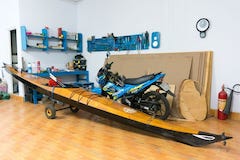
 aving made some more thorough testing, I’m now feeling very pleased with the new boat and its build quality. After several 20 ~ 25 km paddling trips, I think I can average out at 7 kmph for extended time (5, 6 hours) and probably longer with more endurance exercising. That’s still not up to my expectation yet, but about speed, on the internet, you can hardly find trustable reporting on kayak and its paddler’s abilities, some boating information is purely… bloating!
aving made some more thorough testing, I’m now feeling very pleased with the new boat and its build quality. After several 20 ~ 25 km paddling trips, I think I can average out at 7 kmph for extended time (5, 6 hours) and probably longer with more endurance exercising. That’s still not up to my expectation yet, but about speed, on the internet, you can hardly find trustable reporting on kayak and its paddler’s abilities, some boating information is purely… bloating!